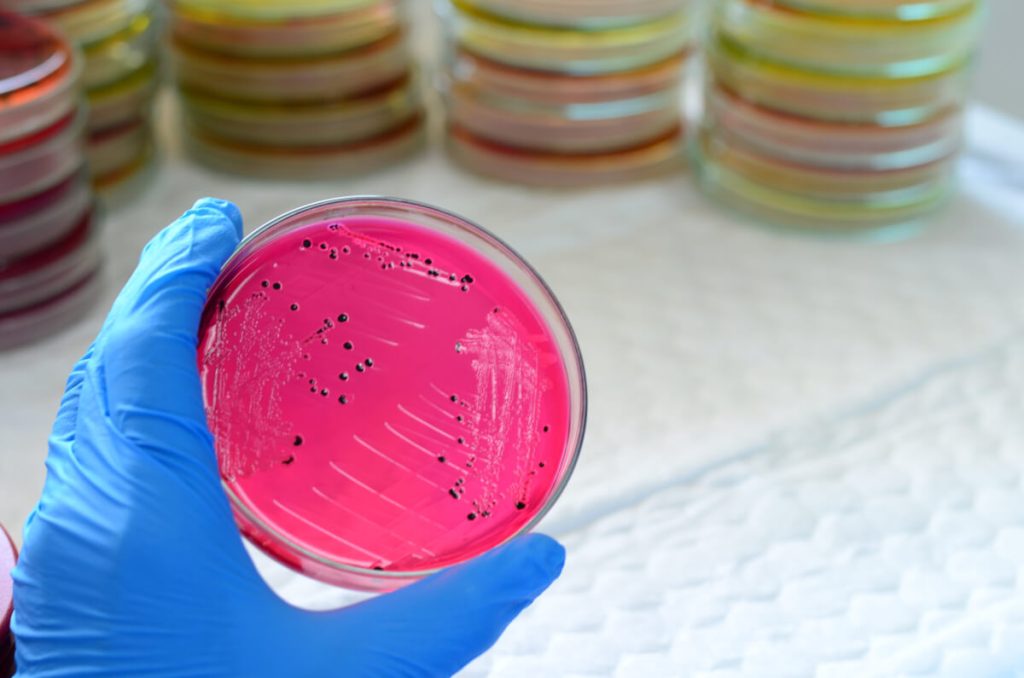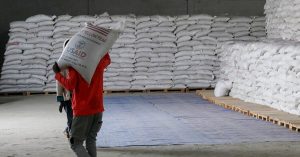

Close-up of Salmonella bacteria that produce hydrogen sulfide growth on XLD agar. (Credit: Yayah_AI on Shutterstock)
SURREY, England — Warmer temperatures in the near future are increasing the risk for widespread Salmonella, according to a new study. The new research shows that specific weather combinations create perfect storms for salmonella transmission
Published in the Journal of Infection, the study found that air temperature above 50°F, relative humidity, dewpoint temperature between 44.6°F—50°F, and longer daylight hours (12 to 15 hours) were found to be key drivers of an increase in Salmonella cases.
The Salmonella bacteria is one of the main culprits behind food poisoning. These bacteria live in the intestines of animals and humans and can contaminate food when meals are not cooked or handled correctly.
“The study highlights how weather plays a significant role in Salmonella outbreaks and provides a valuable tool for predicting future risks and tailoring interventions, particularly in the context of climate change,” says lead author Dr. Laura Gonzalez Villeta, a researcher at the University of Surrey in England, in a statement.
The researchers analyzed 144,703 confirmed cases of Salmonella in England and Wales (2000–2016) using data from the UK Health Security Agency. They examined the timing of outbreaks in relation to 14 weather-related factors, testing how these conditions affected reported cases. The model was also validated using data from the Netherlands, suggesting it could be useful in other high-income European countries.
“The model we used to analyze the data shows promise, as the findings were replicated across England, Wales and, independently, in the Netherlands, suggesting a potential for wider application in other European and high-income countries to help gain new insights on the incidence of Salmonella,” Villeta explains. “It would be interesting to investigate this in regions with very different environmental and socio-economic characteristics, like tropical countries.”
Unlike previous studies that only considered isolated weather factors like temperature or rainfall, this study used a conditional incidence model, which accounts for how different weather conditions interact simultaneously.
Weather factors with the strongest link to salmonella cases include rising temperatures, increased humidity, reduced rainfall, and longer days. Changes in air pressure, wind speed, temperature amplitude, and sunshine duration had little to no impact on future Salmonella cases than temperature and day length. Additionally, the researchers noted that the potential uptick in Salmonella was irrespective of geographical location.
The study suggests that climate change could further increase the risk of Salmonella outbreaks. However, researchers note that more studies are needed in different climate zones, such as tropical regions, to confirm how environmental factors influence the bacteria in other parts of the world.
Paper Summary
Methodology
Researchers employed a novel statistical approach called conditional incidence analysis, examining how different combinations of 14 weather factors corresponded with infection rates. Rather than looking at single weather variables in isolation, they analyzed how groups of three weather conditions occurring simultaneously influenced case numbers. This helped capture complex interactions between factors like temperature, humidity, and daylight hours that previous studies missed.
Results
Temperature above 10°C combined with relative humidity and day lengths of 12-15 hours showed the strongest association with increased cases. The model successfully predicted seasonal infection patterns in both the UK and Netherlands, with peaks typically occurring between August and September. Weather factors like air pressure, wind speed, and sunshine duration showed limited or no significant impact on infection rates.
Limitations
While comprehensive, the study could only analyze reported cases, which typically represent a small fraction of actual infections — estimated at just 1 in 40 cases in the UK and 1 in 20 in the Netherlands. The model also couldn’t account for all potential factors influencing infection rates, such as food consumption patterns or individual behavior changes during different weather conditions.
Discussion & Takeaways
This research provides a new framework for understanding how weather patterns influence foodborne illness risk. The successful application across different countries suggests these weather-illness relationships may be universal rather than location-specific. The findings could help develop early warning systems for high-risk periods, though proper food safety practices remain essential regardless of weather conditions.
Funding & Disclosures
The research was supported by Zoetis and the European Union’s Horizon 2020 research and innovation program. The funders had no role in study design, data collection, analysis, interpretation, or publication decisions.
Publication Information
Published in the Journal of Infection (2025), the study was authored by an international team led by Laura C. Gonzalez-Villeta from the School of Veterinary Medicine, University of Surrey. The paper is titled “Identifying Key Weather Factors Influencing Human Salmonellosis: A Conditional Incidence Analysis in England, Wales, and the Netherlands.”








